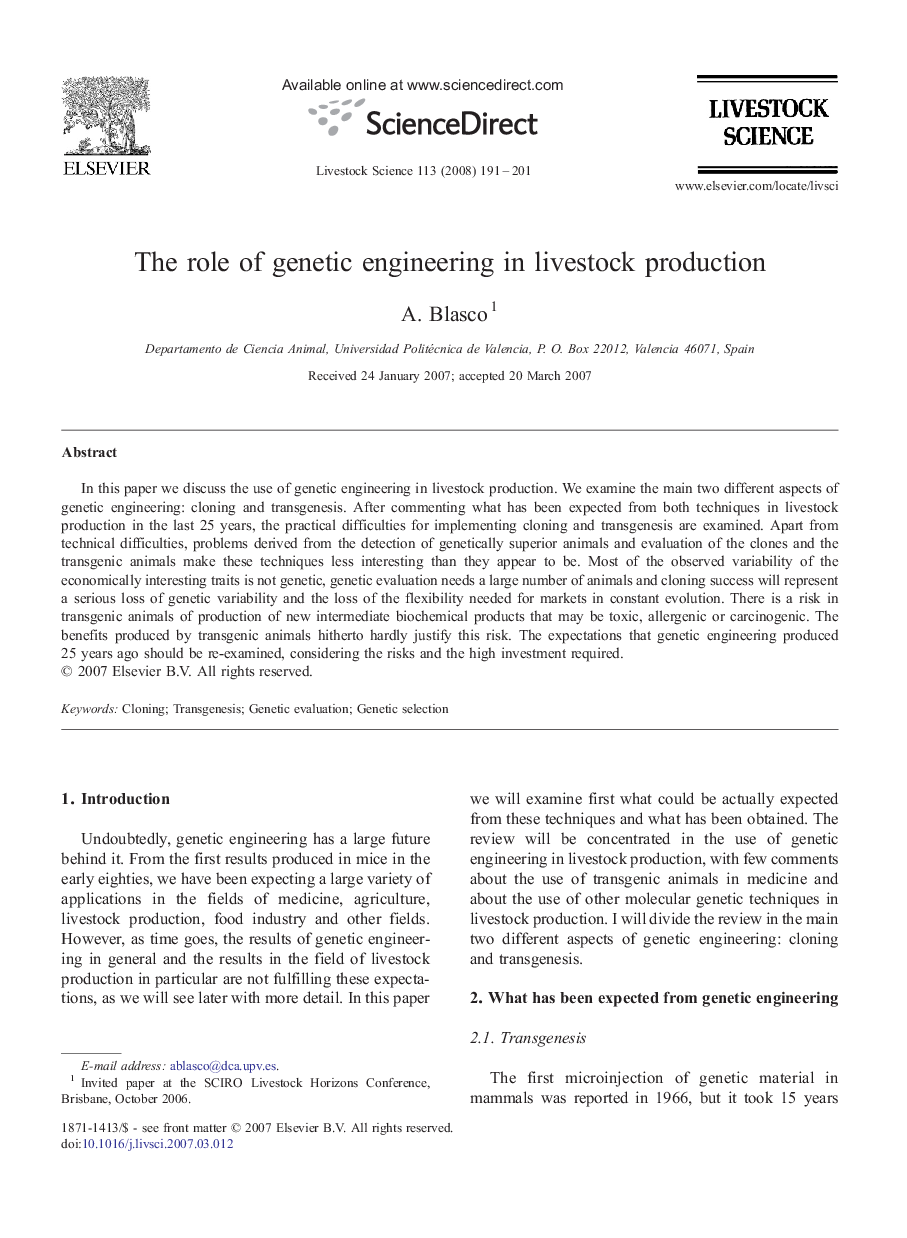| Article ID | Journal | Published Year | Pages | File Type |
|---|---|---|---|---|
| 2448702 | Livestock Science | 2008 | 11 Pages |
In this paper we discuss the use of genetic engineering in livestock production. We examine the main two different aspects of genetic engineering: cloning and transgenesis. After commenting what has been expected from both techniques in livestock production in the last 25 years, the practical difficulties for implementing cloning and transgenesis are examined. Apart from technical difficulties, problems derived from the detection of genetically superior animals and evaluation of the clones and the transgenic animals make these techniques less interesting than they appear to be. Most of the observed variability of the economically interesting traits is not genetic, genetic evaluation needs a large number of animals and cloning success will represent a serious loss of genetic variability and the loss of the flexibility needed for markets in constant evolution. There is a risk in transgenic animals of production of new intermediate biochemical products that may be toxic, allergenic or carcinogenic. The benefits produced by transgenic animals hitherto hardly justify this risk. The expectations that genetic engineering produced 25 years ago should be re-examined, considering the risks and the high investment required.
